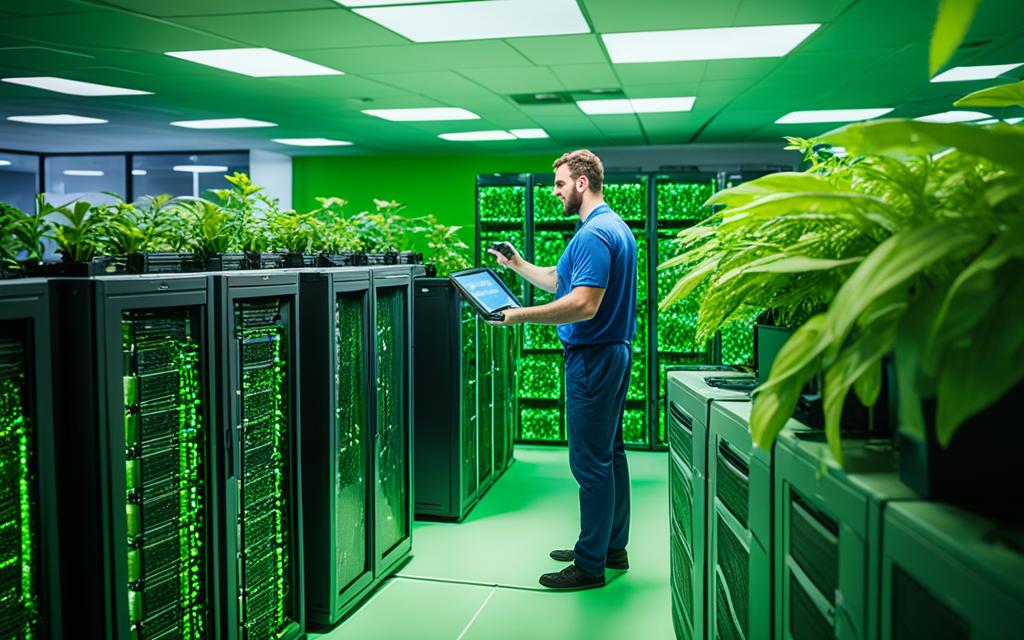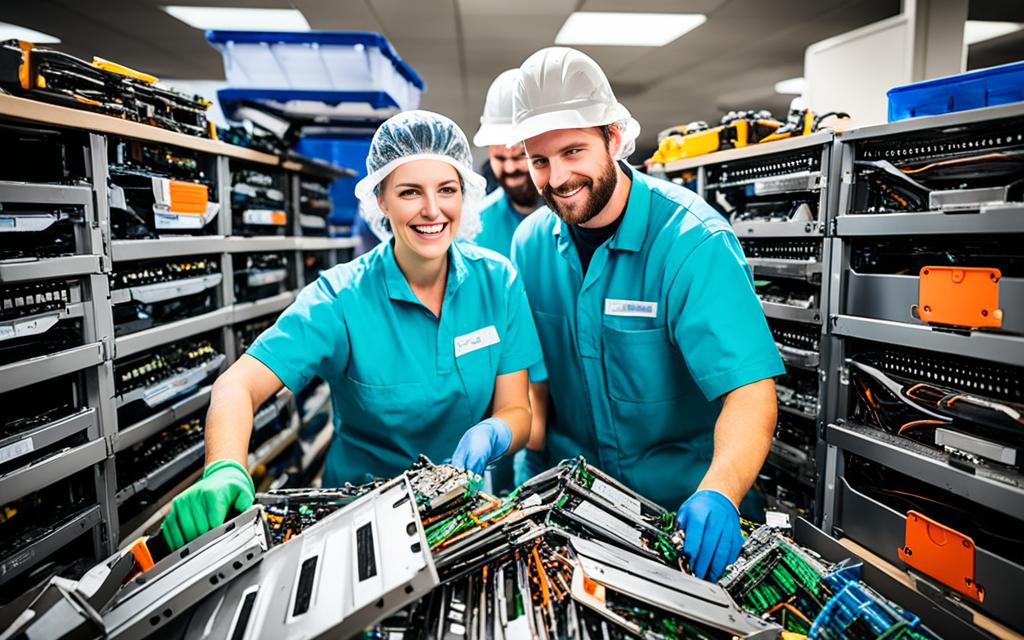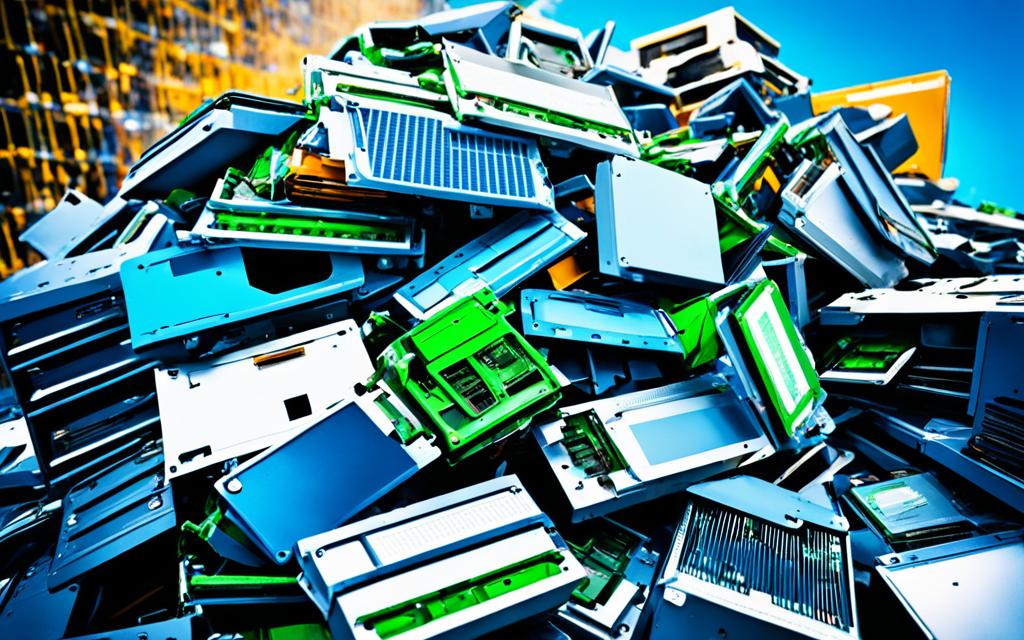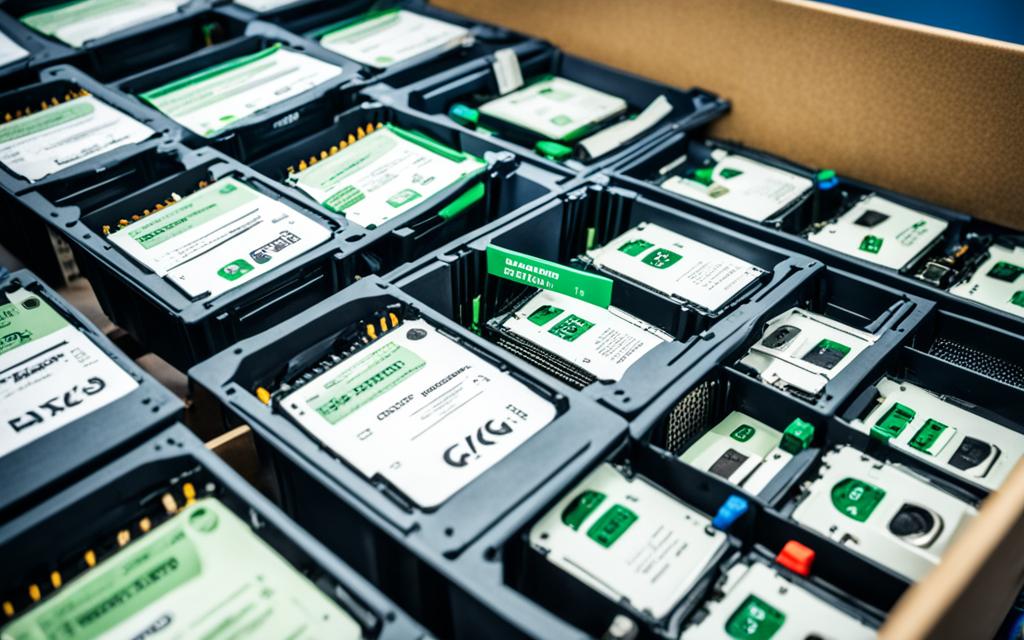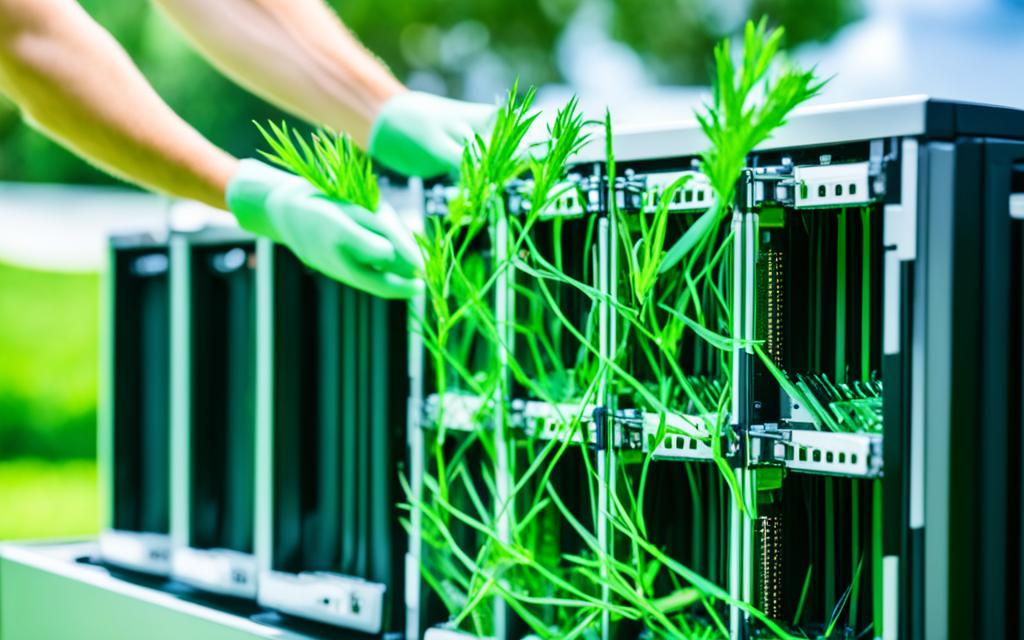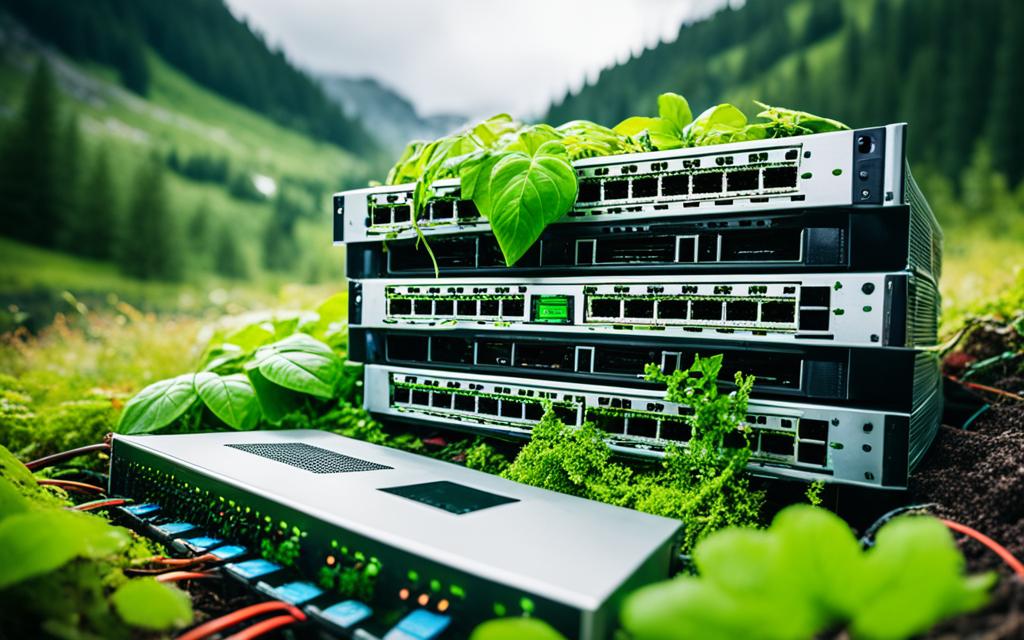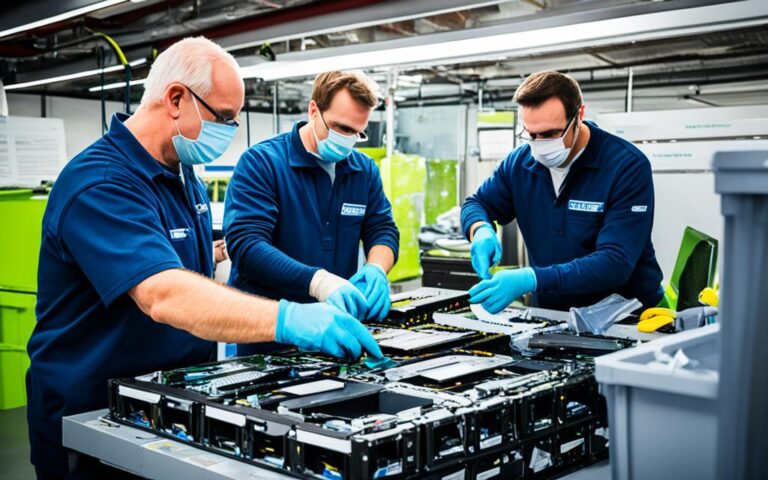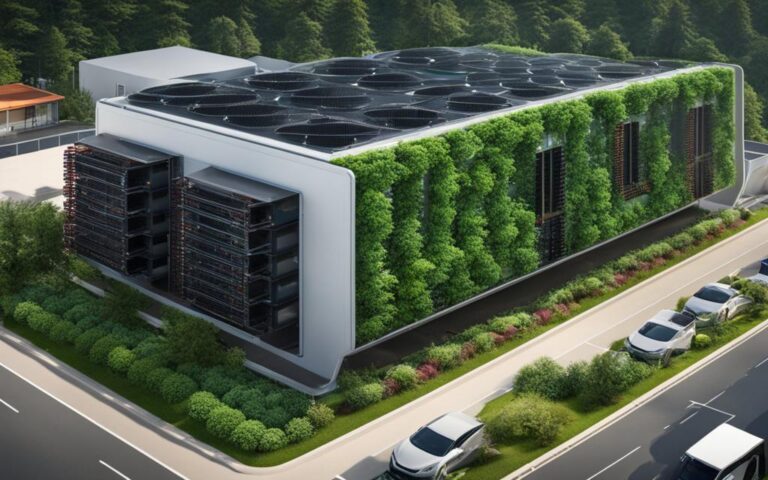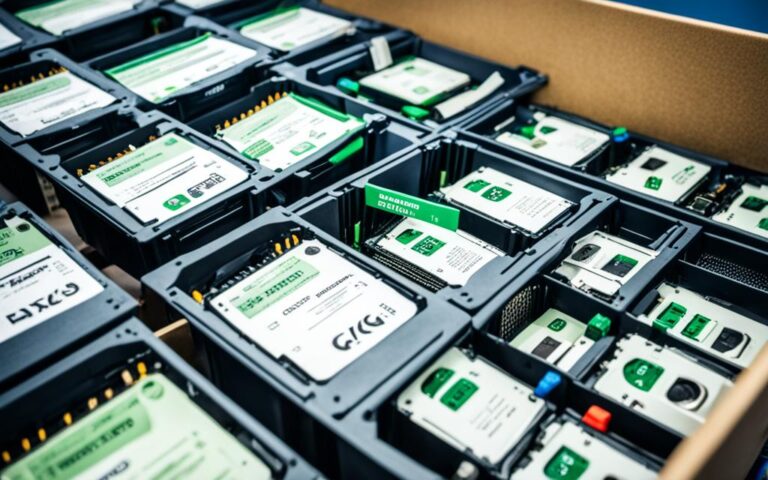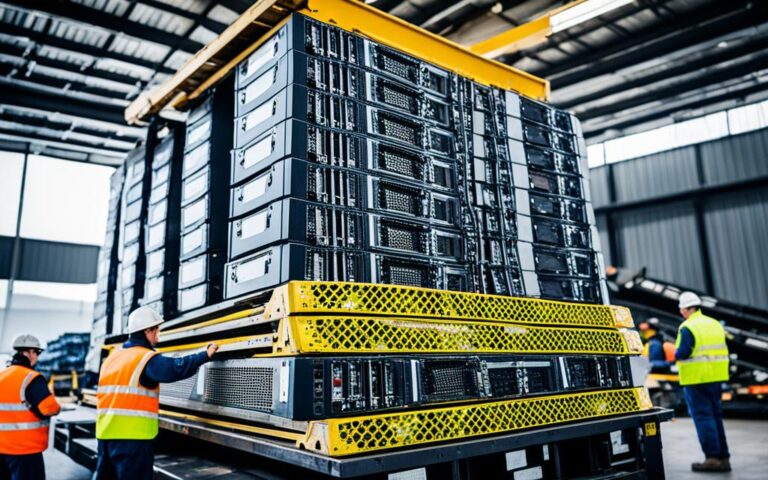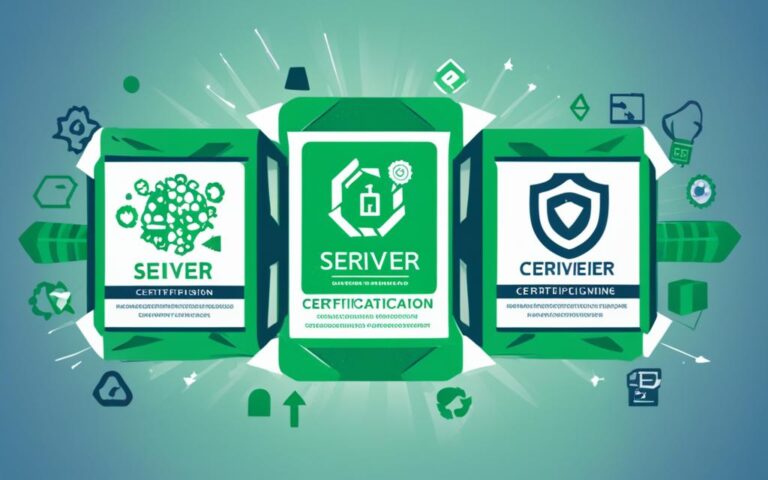The Future of Green Data Centers: The Role of Server Recycling
In today’s rapidly advancing technological landscape, the demand for data centers continues to grow exponentially. However, with this growth comes the pressing need for sustainability and eco-consciousness. That’s where green data centers and server recycling step in.
Green data centers are paving the way for a sustainable tomorrow, addressing the environmental concerns associated with traditional data centers. By implementing innovative solutions, such as server recycling, these centers are redefining the future of technology while minimizing their ecological impact.
In fact, according to a report, the global green IT service market is projected to reach a staggering $34.83 billion by 2030, highlighting the significant potential of sustainable data centers in shaping a greener world.
So, how exactly do green data centers achieve their sustainability goals?
One key aspect lies in decreasing server usage. Continuous running of servers not only leads to underutilization but also results in higher energy consumption. By utilizing advanced server monitoring tools, data center providers can track server utilization, consolidate functions through virtualization, and decommission unnecessary servers. This not only reduces energy consumption but also optimizes physical space within the data center.
Another crucial strategy is the adoption of eco-friendly materials and components. Green data centers prioritize using compact buildings, low-emission materials, and waste recycling practices. They also harness alternative energy sources for power and cooling, such as solar panels, wind turbines, and other renewable resources. These initiatives result in significant energy savings and a reduced carbon footprint.
In addition, data center providers invest in smart facilities management tools powered by artificial intelligence (AI). These tools analyze energy data, optimize asset utilization, and continuously monitor temperature levels for efficient HVAC functions. With AI-powered monitoring, data centers ensure that energy consumption is precisely forecasted and aligned with sustainability objectives.
Last but not least, green data centers leverage renewable energy sources. By harnessing the power of solar panels, wind turbines, and hydroelectric plants, they replace traditional fossil fuels in powering their operations. This transition not only reduces carbon emissions but also proves to be cost-effective and reliable in the long run.
As we look towards a sustainable technological future, the importance of green data centers and server recycling cannot be overstated. These eco-conscious approaches redefine the way data centers operate, balancing technological advancements with environmental responsibility. Together, we can build a greener, more resilient tomorrow.
Decrease Server Usage
In today’s data-driven world, server usage plays a crucial role in the energy consumption of data centers. The continuous running of servers often leads to underutilization and higher energy usage, which can have negative environmental impacts. However, data center providers have the power to reduce server energy consumption and contribute to a more sustainable future.
One way data center providers can decrease server usage is by utilizing server monitoring tools. These tools allow them to track server utilization and identify areas of inefficiency. By analyzing data on server usage patterns and workloads, providers can make informed decisions about server optimization and consolidation.
Virtualization is another effective strategy to decrease server usage. Through virtualization, providers can consolidate functions into fewer machines, effectively maximizing server utilization rates. By running multiple virtual servers on a single physical server, data centers can reduce the physical footprint required for operations, consequently lowering energy consumption and costs.
In addition to utilizing virtualization, data center providers should also consider decommissioning unnecessary servers. Over time, servers may become outdated or no longer required, yet they continue to consume energy. By regularly evaluating the necessity of servers and decommissioning those that are no longer needed, providers can further reduce energy consumption and minimize their environmental impact.
“Reducing server usage not only leads to lower energy consumption, but it also helps data centers optimize their operations and free up resources for other critical tasks.”
Benefits of Decreasing Server Usage:
- Lower energy consumption
- Reduced carbon footprint
- Optimized server utilization
- Cost savings through server consolidation
- Improved operational efficiency
By taking proactive measures to decrease server usage, data center providers can contribute to a greener and more sustainable technological tomorrow.
| Actions | Impact |
|---|---|
| Utilizing server monitoring tools | Enables tracking of server utilization, leading to optimized resource allocation and reduced energy consumption |
| Implementing virtualization | Consolidates functions into fewer machines, maximizing server utilization and minimizing physical footprint |
| Decommissioning unnecessary servers | Reduces energy consumption by eliminating servers that are no longer needed or outdated |
Opt for Eco-friendly Materials and Components
As data centers strive to mitigate their impact on the environment, the adoption of eco-friendly materials and components plays a crucial role in reducing energy usage and carbon footprint. By embracing sustainable practices, data centers can contribute to a greener future while maintaining their operational efficiency.
One of the key aspects of green data centers is the use of compact buildings designed to optimize space utilization. These compact structures minimize energy consumption by reducing the need for excessive cooling and lighting.
Moreover, a significant focus is placed on utilizing low-emission materials throughout the data center infrastructure. By choosing materials that have a reduced environmental impact, such as recycled steel and low-VOC (volatile organic compound) paints, data centers can minimize their carbon footprint and contribute to a healthier environment.
Waste recycling practices further enhance the sustainability efforts of data centers. Implementing efficient waste management systems ensures that materials are properly sorted and recycled instead of ending up in landfills. This commitment to recycling helps conserve valuable resources and reduces the environmental burden associated with waste disposal.
Another important facet of eco-friendly data centers is the adoption of alternative energy sources for power and cooling. By harnessing renewable energy sources like solar, wind, and hydroelectric power, data centers can significantly reduce their reliance on non-renewable fossil fuels. Implementing energy-efficient upgrades such as air compressor improvements and LED lighting further enhance energy savings and contribute to the overall sustainability of the facility.
Benefits of Opting for Eco-friendly Materials and Components:
- Reduced energy consumption and operational costs
- Lower carbon footprint and environmental impact
- Promotion of sustainable practices and resource conservation
- Enhanced reputation as a responsible and eco-friendly data center
In summary, by opting for eco-friendly materials and components, data centers can take significant steps towards building a sustainable technological future. These efforts not only result in tangible benefits for the environment but also contribute to cost savings and a positive public image for data center providers.
Invest in Smart Facilities Management Tools
Smart facilities management tools are a critical component in optimizing energy efficiency in data centers. By utilizing these tools, data center providers can effectively analyze and manage various aspects of their facilities, leading to substantial energy savings and improved sustainability.
Gather Data for Energy Analysis
To optimize asset utilization and identify energy-saving opportunities, smart facilities management tools gather data on power consumption and data loads. This data is then analyzed to identify patterns and trends, enabling data center providers to make informed decisions on energy optimization strategies.
AI-powered Monitoring for Energy Efficiency
AI-powered monitoring tools play a key role in analyzing energy data and forecasting power usage effectiveness. By applying machine learning algorithms, these tools can detect inefficiencies and provide real-time insights to optimize energy consumption. This proactive approach ensures smart and energy-efficient operations within data centers.
“Smart facilities management tools enable data center providers to make data-driven decisions for optimal energy management.”
Continuous Optimization of Temperature Levels
Incorporating AI tools into data center operations allows for efficient management of HVAC functions. These AI-powered systems can monitor temperature levels and adjust cooling systems in real time to maintain an optimal operating environment. By continuously optimizing temperature levels, data centers can reduce energy consumption without compromising the performance and reliability of their infrastructure.
| Benefits of Smart Facilities Management Tools | Example |
|---|---|
| Improved Energy Efficiency | Reduction in power consumption by 20% through optimized utilization |
| Proactive Energy Management | Real-time insights and alerts enable prompt response to potential issues |
| Cost Savings | Annual cost savings of £100,000 due to optimized energy usage |
| Enhanced Sustainability | Lower carbon footprint through reduced energy consumption |
By investing in smart facilities management tools, data center providers can unlock the full potential of their infrastructure in terms of energy efficiency and sustainability. These tools empower data center operators to make data-driven decisions and proactively manage energy consumption, ultimately contributing to a greener and more sustainable future.
Leverage Renewable Energy
Transitioning to renewable energy sources is crucial for green data centers. By utilizing solar panels, wind turbines, and hydroelectric plants, data centers can replace traditional fossil fuels and reduce their carbon footprint. Renewable energy sources offer numerous benefits in terms of cost-effectiveness and reliability, making them an ideal choice for sustainable data center operations.
Solar panels harness the power of sunlight, converting it into electricity that can be used to power the data center’s operations. By installing solar panels on the roofs of data centers, they can generate clean energy, significantly reducing reliance on non-renewable energy sources. Wind turbines are another viable option, as they utilize the wind’s kinetic energy to generate electricity. Installing wind turbines in the vicinity of data centers allows for the production of renewable energy that can power the center’s operations.
Furthermore, data centers can leverage hydroelectric plants to generate electrical power. Hydroelectric plants harness the energy from flowing water to generate electricity, making them a sustainable and reliable source of power. By integrating these renewable energy sources into their power supply infrastructure, data centers can actively contribute to a sustainable future, reducing carbon emissions and promoting environmental protection.
FAQ
What are green data centers?
Green data centers are data centers that prioritize energy efficiency and sustainability by adopting eco-friendly alternatives and practices to reduce their carbon footprint.
How do green data centers reduce energy consumption?
Green data centers reduce energy consumption by decreasing server usage, utilizing server monitoring tools to track utilization, consolidating functions through virtualization, and decommissioning unnecessary servers.
What eco-friendly materials and components are used in green data centers?
Green data centers use eco-friendly materials such as low-emission building materials, compact buildings, LED lighting, and waste recycling practices to reduce energy usage and carbon footprint.
What are smart facilities management tools?
Smart facilities management tools are tools that optimize energy efficiency in data centers by gathering and analyzing data on power consumption and data loads, utilizing AI-powered monitoring tools to forecast power usage effectiveness, and managing HVAC functions for temperature optimization.
How do green data centers leverage renewable energy?
Green data centers leverage renewable energy sources such as solar panels, wind turbines, and hydroelectric plants to replace traditional fossil fuels, reduce carbon footprint, and contribute to a sustainable future.

